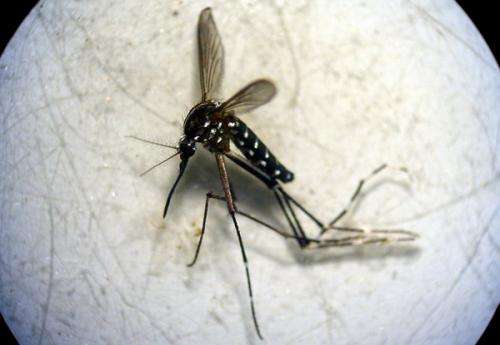Tiger mosquito is found in Andalusia thanks to a collaborative citizens' project

Thanks to a mobile phone app, the tiger mosquito has been discovered for the first time to be present in Andalusia. The insect transmits diseases like chikungunya and dengue fever. This was made possible by public participation via the "AtrapaelTigre.com" app and subsequent verification by entomologists collaborating in the project.
June 2014 saw the launch of the mobile app Tigatrapp, from AtrapaelTigre.com, a citizen science project aiming to study and monitor the tiger mosquito in Spain with the participation of entomologists from across the nation.
The more than 6,000 people who have downloaded it to date have sent data from a total 1,600 possible points where this insect might be located. Thanks to these users, the species has been found in Andalusia for the first time.. The study is published in the journal 'Anales de Biología'.
As the project team, put together by the ICREA – Movement Ecology Lab at the Centre for Advanced Studies of Blanes, Spanish National Research Council (CEAB-CSIC), tells SINC: "Thanks to public participation the (potential) presence of the mosquito was discovered in a new region of Spain. Then, entomologists involved in the project began sampling and checking on location."
Until now, researchers had not taken regular samples in Andalusia, so they suspect that the tiger mosquito must have been in the region for a while. "It must have been here longer because in past research it has been found in other areas of Andalusia," they add.
A traveling insect
The tiger mosquito is a vector (transmitter) of diseases such as chikungunya and dengue fever – besides being a nuisance, having daytime habits and biting aggressively during the day. It was first spotted in Spain in Sant Cugat del Vallès (Catalonia), and scientists are not certain where it comes from originally.
"We don't know, but it points to dispersion due to territorial leaps. This is hard to verify as there are no systematic samples of the entire territory. It could have arrived at the south of the country by passive displacement or mediated by human transport," they argue.
To study this aspect they have developed a new "mission" in the app "experimento #coche" (#car experiment) which encourages AtrapaelTigre.com users to use the app to submit a notification if they find a tiger mosquito in a vehicle. In this way they will know what distance it travels by 'hitchhiking'.
"These results demonstrate that the public's contribution can make a big difference," they add, "and although scientific progress takes time, this kind of collaborative effort can lead to rapid discoveries like new science citations."
Another noteworthy aspect of the project was to corroborate the fact that this species has been progressing towards the north of Catalonia to the foot of the pre-Pyrenees in Berga.
More information: Sarah Delacour-Estrella, Francisco Collantes, Ignacio Ruiz-Arrondo, Pedro María Alarcón-Elbal, Juan Antonio Delgado, Roger Eritja, Frederic Bartumeus, Aitana Oltra, John R.B. Palmer y Javier Lucientes. "Primera cita de mosquito tigre, Aedes albopictus (Diptera, Culicidae), para Andalucía y primera corroboración de los datos de la aplicación Tigatrapp". Anales de Biología 36: 93-96, 2014. DOI: dx.doi.org/10.6018/analesbio.36.16.
Provided by Plataforma SINC


















